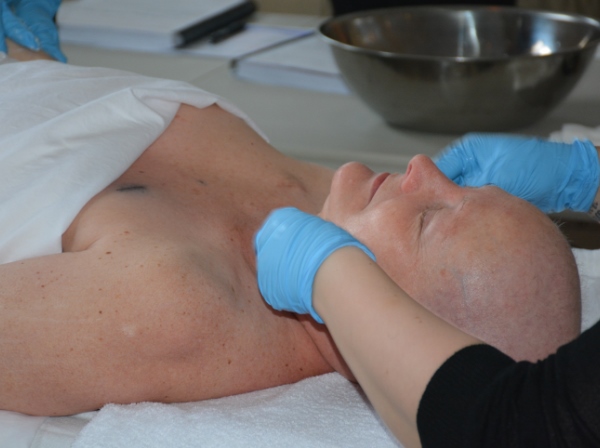Derma Aesthetics has joined forces with internationally acclaimed oncology aesthetics expert Morag Currin to launch Australia’s first oncology aesthetics registered practioners program.
Morag Currin, who launched the world’s first Oncology Aesthetics certification program in the US in 2008, was in Sydney this week to conduct workshops for beauty professionals and help Derma Aesthetics (the distributor of dermaviduals) begin implementing the program.
Derma Aesthetics co-managing director Reika Roberts says the company is bringing the oncology aesthetics platform to Australia to “educate, inform and start a national dialogue in our industry about cancer”.
“My hope in introducing this educational program to Australia is to try to make a difference to, and to provide an understanding and awareness of the changes to, cancer patients’ skin once a diagnosis has been made.
“By providing skin treatment therapists with the tools they need … they can assist their clients to keep their skin at its best, and importantly, help them to relax.”
According to Currin, whose lifelong mission is “to ensure no client gets turned away from a clinic due to the therapist not being confident in how to treat them”, there is a huge need for oncology aesthetics in beauty salons and spas.
“Beauty treatments can offer numerous benefits for cancer patients including relaxation, symptom relief (eg, massage can help pain, stress and fatigue) and appearance recovery (skin treatments, brow ‘reconstruction’ and makeup ‘lessons’).
“The evidence is clear that cancer patients have an improved quality of life and reduced depression when they feel better about their appearance.”
However, many cancer patients who want to have such treatments avoid attending salons and spas because:
- Their doctor, or someone else on their medical team, has suggested they do not frequent a salon/spa.
- They are nervous because the therapist is not informed and there could be a potential negative experience.
- They do not have the energy (mentally, emotionally and physically) to talk about the disease and process.
Currin believes the Oncology Aesthetics registered practitioners program will help encourage cancer patients to attend salons and spas.
Roberts explains that the decision to launch the program in Australia is “a bit of a personal crusade”.
“I can’t think of anyone in my life that hasn’t been afflicted with cancer in some way,” she says.
“It is such an insidious disease, and we are passionate about helping people with cancer.
“As distributors, if our products can help cancer patients feel better, and we can help establish an accredited oncology aesthetics program that creates a safe environment for staff and cancer patients and survivors to have spa treatments, then I will be very satisfied.”
Although Oncology Aesthetics is already widely practised in the US and Canada as well as in Italy, Brazil, Israel, South Africa and other countries around the globe, Reika says the major challenge in launching the program in Australia “is working with oncologists and charities, and lobbying the government to have the programs accredited to our healthcare systems”.
“I am pleased to say that whilst this is not an easy segment to break into, pathways are being made with some senior ministers and executives in the oncology sector supporting the program,” she says, adding the company has also recently begun discussions with Chris O’Brien Lifehouse and The McGrath Foundation.
The Oncology Aesthetics training course teaches beauty professionals about cancer, its treatment and side effects as well as how to modify salon services for patients and survivors.
Training modules include
- Salon setting and services – what services can and cannot be performed
- Psycho-social – How to communicate better with clients diagnosed with cancer
- Massage modification
- Business practices – how to market oncology aesthetics
- Ingredients/products – what’s safe to use and what’s not
The course is made up of an online theoretical component which should take around 30 hours to complete and additional training with appearance recovery modules can be done in-class over two days.
For more information visit www.oti-oncologytraining.com and www.dermaviduals.com.au

